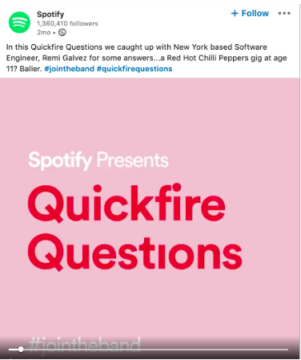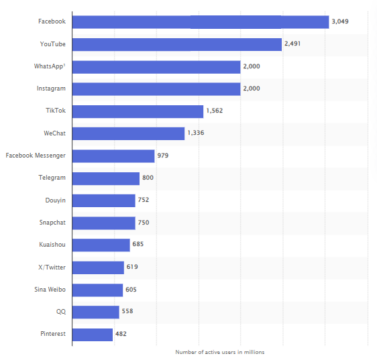What is Social Media Recruitment (Social Recruiting)?
Nowadays, most employers are using digital platforms to search for high-quality talent. Through the use of platforms such as Facebook, Instagram, X, and LinkedIn, employers can find talent quicker and more affordable than ever. These platforms have reduced hiring processes and expenses, making this a popular strategy for hiring in 2024. In this post, we will go over the basics of recruiting using social media, the reason you should think about this option, and the best way you can begin today.
Definition of Social Media Recruiting
Social media recruitment is the use of different social media platforms to attract, find, and recruit top candidates for your company. It includes the use of social media such as Facebook, Twitter, and LinkedIn. This also allows for the use of forums as well as blogs.
Why is Social Recruiting Beneficial for Businesses?
Now that you know more about what social recruiting is, let us look into its benefits.
1. Tap into the Passive Candidate Pool
Passive candidates are employed, but they are open to possibilities. When it comes to the job market, they represent around 70 percent of the potential employees. But, under standard recruitment methods, this 70% is often ignored.
If you make use of social media for recruitment, you have immediate access to this 70 percent. Contrary to job boards and other recruitment platforms, people are using social media, professionally or casually, each day. Thus, by promoting your job on social media platforms, you can get noticed by people who are not currently looking for jobs.
In the end, it increases the chances that you will attract genuine candidates for the position and not simply “looking” or “needing” for a job. It also improves the candidate’s quality and has a positive impact on the bottom line of your business.
2. Highlight your Company Culture
In the job market, a company’s culture can be one of the major factors that attract high-quality talent. More than 50% of job applicants believe that this is an essential aspect when they are looking for jobs.
Utilizing social media in recruiting gives you the perfect platform for highlighting the culture of your organization. This can be used to your advantage and show how working for your company is the most beneficial.
There are a variety of ways to show your company culture. Such as:
- Employee-Generated Content (EGC): Get team members to share their positive experiences, work highlights, or even glimpses of everyday office life.
- Showcase Benefits & Initiatives: Explain the rewards and programs that set you apart as an employer. This could include anything from flexible schedules to professional development opportunities.
- Empower Employee Advocacy: Encourage your team to be active on social media, sharing updates and engaging with potential candidates.
3. Save Money and Time on Hiring
As a business owner, you are aware of how costly and lengthy it can be to find talent. To put it more into perspective, it can cost up to $4,700 and takes around three to six weeks. Job boards usually cause this, as they’re overpriced and only target those looking for a job, not actually interested in your company.
However, by using social media recruiting, you can:
- Expand Your Reach: Increase the visibility of your job openings to a wider pool of potential candidates organically.
- Target Your Audience: Access industry-specific networks or professional groups where the ideal candidates are more likely to be found.
- Minimize Costs: Promote openings without relying heavily on expensive job board advertising.
Who Uses Social Media for Recruiting?
Today, companies, large and small, are taking advantage of social recruitment. Here are a few examples:
UPS

UPS has a separate Twitter account called @UPSJobs that provides a mix of job openings and glimpses into their culture. They strategically use the hashtag #FutureYou to make job openings feel like opportunities for growth and belonging. This helps to connect with potential candidates on an individual level, increasing the chance of finding employees that fit perfectly with the business.
Hilton

Hilton’s recruitment-oriented Instagram account is focused on demonstrating Hilton’s values. One illustration is the celebration of Women’s History Month, highlighting their commitment to diversity and inclusion. This social media recruiting strategy draws candidates similar to their values and creates an impression of Hilton as a positive employer.
Spotify

Spotify uses the content created by employees on LinkedIn to show off its culture. They highlight video clips of employees across the globe in various offices and departments. This gives potential applicants an authentic and well-rounded glimpse of the working life at Spotify. Their hashtag, #jointheband, draws inspiration from the music theme and reinforces the notion that you are part of something exciting and cooperative.
How to Use Social Media for Recruiting
Now that we have the basics of social recruiting covered, let us go into how you can get started with it today.
Step 1: Identify Your Recruitment Goals
Recruiting with social media without a strategy will result in wasting time and effort. So, begin by defining the goals you intend to achieve. This will allow you to track your progress and determine whether social media is in line with your hiring requirements.
Here are some common recruitment goals and how to measure them:
- Boost Candidate Quality:
- Metric: Compare the percentage of qualified candidates from social media vs. other sources.
- Reduce Time-to-Hire:
- Metric: Measure the average time to fill a position through social media vs. traditional channels.
- Improve Candidate Experience:
- Metric: Survey candidates on their social media application experience (ease of use, feedback, etc.).
- Increase Job Posting Visibility:
- Metric: Track views, shares, and clicks on social media posts vs. job boards.
These are just examples of key performance indicators (KPIs). However, it is crucial to keep track of certain factors because it will help determine whether social media recruiting is a good fit for your company or not.
Step 2: Choose Relevant Social Media Platforms
In addition to the above, choosing the appropriate social media platforms is vital to successful social recruitment. In the ideal scenario, you will want to select among the following selection of most popular social media sites:

Source: Statista
Picking one of these is a wonderful place to start. However, if you are looking to go further, select an option that is compatible with your industry.
For instance, graphic designers or other professionals who are creative could be active on visual focused websites like Instagram. On the other hand, tech professionals could be more active on forums or Twitter. Think about the perfect candidate for a certain job and then consider the places they are most likely to spend time online.
Although it is not on the list, LinkedIn is also an effective tool because of its focus on professionals. You can find any kind of professional on LinkedIn; therefore, we strongly recommend using it for your social media recruitment strategy.
Also, do not feel restricted to a single platform. Exploring various options will allow you to expand your reach and tap into various talent pools.
Step 3: Create a Social Media Presence
Now that you have chosen your platforms, it is time to build a presence that attracts the right candidates. Think of your social media profiles as extensions of your company website.
Here is how to make a strong impression:
- Showcase Your Culture: Go beyond job listings. Share content that gives a genuine feel for your workplace – team outings, celebrations, or even a peek at the office environment. This helps candidates picture themselves as part of your team.
- Define Your Brand Voice: Will you be friendly and approachable or more formal? Your social media tone should reflect your overall company personality and appeal to your ideal candidate.
- Be Consistent: Use the same tone and visual style across all platforms. This creates a cohesive image for potential employees and builds recognition.
Important Note: Creating a strong social media presence takes time and effort. But when done well, it becomes a powerful tool for attracting top talent before they even start looking for jobs.
Step 4: Outline the Application Process
Additionally, having a clear application procedure is crucial for successful social recruitment. While you are engaging through social media platforms, don’t make potential candidates have to work to submit an application. Keep the application process simple and clear.
You might consider offering various methods of applicants, including emailing directly or utilizing an online form. Google Forms are completely free, easy to set up, and provide flexibility in gathering the information you require.
It is also crucial to control expectations. Inform applicants when they will hear from you to show your appreciation for their time and enthusiasm.
Summary
It is clear that social media recruitment is an effective method of connecting with talented people. It extends the reach of traditional job boards which allows you to access the vast pool of candidates who are passive. It also gives you unique opportunities to showcase your company’s culture to help you attract people who align with your company’s values.
Take your social recruiting to the next level with USIQ certification. Become a certified Top Employer or Family-Friendly Employer, demonstrating your commitment to a positive workplace. USIQ’s data-driven approach provides valuable insights and a recognized seal of approval, boosting your employer brand. Learn more about the benefits of USIQ certification today.

